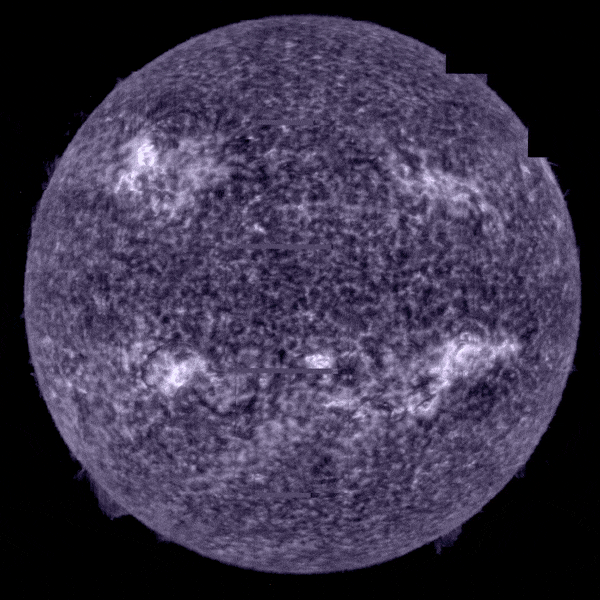NASA and other agencies such as ESA have presented us with incredible images of the Sun. Through the captures of the Solar Orbiter probe, humanity today studies its star in much more detail. And it is these details that are surprising and allow us to see the Sun as we have never seen it.
One of the images captured by the Extreme Ultraviolet Imager (EUI) shows the Sun Disk complete with the corona at a distance of 75 million kilometers.
To give you an idea, this probe is currently halfway between the Sun and Earth.
And how do you get an image with so much detail?
The captured image is actually a set of several images. The mosaic fits together 25 individual images which, given its giant size, took around 4 hours to complete.
The capture required several images to be taken from the same location and, for that, it was necessary to wait for each cycle to be repeated - for each of these frames it was necessary to wait, on average, 10 minutes.
The result can be seen below and, originally, it has more than 83 million pixels. The main aspect highlighted was the clarity in which the solar corona is visualized.
SPICE in action to detail Earth's star
As mentioned, in this action another instrument was also used. It is known as SPICE and was able to delineate the layers in the Sun's atmosphere, passing through the corona and chromosphere.
It was possible to reproduce a visual capture with a wavelength of ultraviolet light manifested by hydrogen gas.
The method was similar to the previous one, and several images were used to create mosaics of different colors, which serve to illustrate the temperatures of the elements present, such as carbon (temperature: 32,000 °C) in blue, hydrogen gas (temperature: 10,000 °C) in purple, oxygen (temperature: 320,000 ºC) in green, and neon (temperature: 630,000 ºC), illustrated by the color yellow.
Although it doesn't bring us, to the common mortal, a luxury of details, the truth is that the results exceed what our eyes can perceive.
With the data obtained, physicists will be able to delineate the eruptions that happen from the solar corona to the inner atmospheric layers, and they will also be able to investigate the reason that makes the corona exceed 1 million degrees Celsius, while other segments, such as the surface, have a temperature of "only" 5000 °C.
Although Solar Orbiter is closer to the Sun than it has ever been, it still hasn't reached its limit. In fact, and according to NASA, until the 26th, the probe will be at the closest point to the Sun.
Currently, the instrument collects data and photos of solar wind particles inside Mercury's orbit.
-



